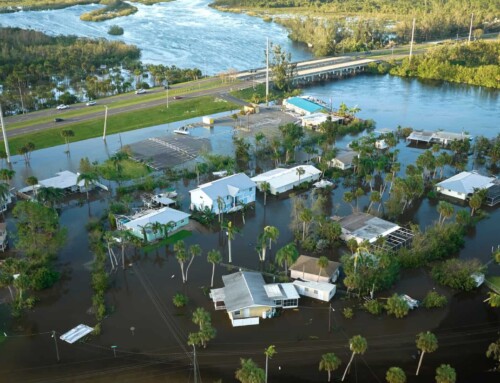Over the past year, the concept of disaster planning was summarily turned on its head. Afterall, how do you plan for a global pandemic to disrupt local economies the world over? While the distribution of the vaccine has begun to alleviate some of the stress for the immediate future, there is still the looming concern of virus variations and the potential that COVID-19 will persist every flu season. So now, it’s important to attempt to plan for the improbable. The best way to protect yourself and your company is to develop or build upon a current, comprehensive business resiliency plan.

Step 1: Identify your Risks
Ask yourself what hazards does your region commonly face. The southeastern states and hurricanes, the midwest and tornadoes, the north and snowstorms. It’s important to take some time to consider unpredictable hazards as well, however. In the past year, events such as civil unrest or the attempted insurrection at the capitol, while unexpected and unprecedented, have been revealed as potential threats to local business. Start with plannable natural disasters, then human-made hazards, and finally try to consider the unexpected. This could come in the form of local protest that becomes violent, a terrorist attack, or simply an environmental or man-made disaster that you couldn’t anticipate.
Step 2: Develop a business emergency plan.
While most organizations have some form of disaster plan, it might be the right time to update or add to it. This step has a number of steps on its own depending on the size of your business and the desired scope of your response. To start, check what is required of you by law. This will help you to develop the outline and guidelines of your plan. Using the risks you’ve previously identified as a framework, you can conduct business impact analysis to consider how each risk would increase expenses, result in regulatory fines, and otherwise disrupt your regular practices.
Step 3: Compile your disaster plan.
This step will most likely be the most time-consuming and require the cooperation of your leadership team, HR department, and potentially other local government resources depending on your reach and importance to the community. While it’s possible to use a basic disaster response plan, it may be important to consider other questions you may not have considered. How will you handle the initial fallout and protect your employees, business, and operations? How much resources, both staff and funding, will be required to take care of operations for any given crisis? How will you communicate with your staff and the public? How will you return to regular business practices following the disaster? Consider every angle and build contingencies in order to facilitate a speedy and safe recovery.
Step 4: Test the plan.
No plan has any reasonable chance of success without reviewing, testing, and training. Review the plan with your management team, allowing for discussion and making amendments where necessary. Then do the same with the rest of your staff. Make sure to make it clear about every person’s individual responsibility and the expectations for them. Consider covering what your workforce can expect from you, if you plan on offering any forms of support. While it may not be vital to practice every aspect of your plan every year, it should be included in your employee welcome packet and should be covered by your whole staff every few years, at least.

During a Crisis
Even with the most careful planning, it’s possible to find yourself unprepared leading up to or in the middle of a crisis. There are still steps you can take to protect yourself, your employees, and your business at this point.
Keep an eye out for indicators. This is anything that reveals a point of weakness or a potential risk. Paying attention to local news throughout the day, or monitoring social media during a developing situation, allows you to respond more quickly. Pay attention to the safety or political climate of any area that you either have a business or even a traveling employee. Their safety is your responsibility. Always know where your people are.
Communicate the situation. When in doubt, over communicate. Make sure that all of your employees know about a risky situation, whether they are on-site or off. Communicate closures and any helpful information to your employees. Update your social media accounts that you are closing for anyone else who might be visiting the property, as well.
Secure your site. If you have a gate, make sure it’s secured and locked. If necessary, you can even board up your windows and doors. Lock valuable or fragile items in a secured room or a safe. If you have on location security at any property, increase their patrols if it’s safe to do so. Keep an eye on your locations via camera. All of these can help make your property a less enticing target for anyone who might be looking to cause mayhem.
Reach out. After you and your people are safe, reach out to any business partners or suppliers. If you’re expecting a delivery, make sure that they are aware of the situation and make a plan to postpone or adjust the delivery location. After an event, it may also be prudent to reach out to other businesses in your community to offer support if it’s possible and safe.
Focus on business continuity. Figure out how to resume normal business operations, or otherwise how to adjust. Consider how your employees might be able to work remotely or attempt to secure space in a shared workplace such as WeWork. Plan for a tiered return to work policy, so that you can get employees essential to your operation safely into the office or back to work.
—
While it’s never easy to think about handling a disaster, creating a plan or having an idea of how to respond in a crisis can be the difference between a complete shutdown of operations, and being able to return your business to normal procedure immediately. For more information on how to protect yourself against normally occurring catastrophes see our blog posts on hurricane or disaster preparation here.





